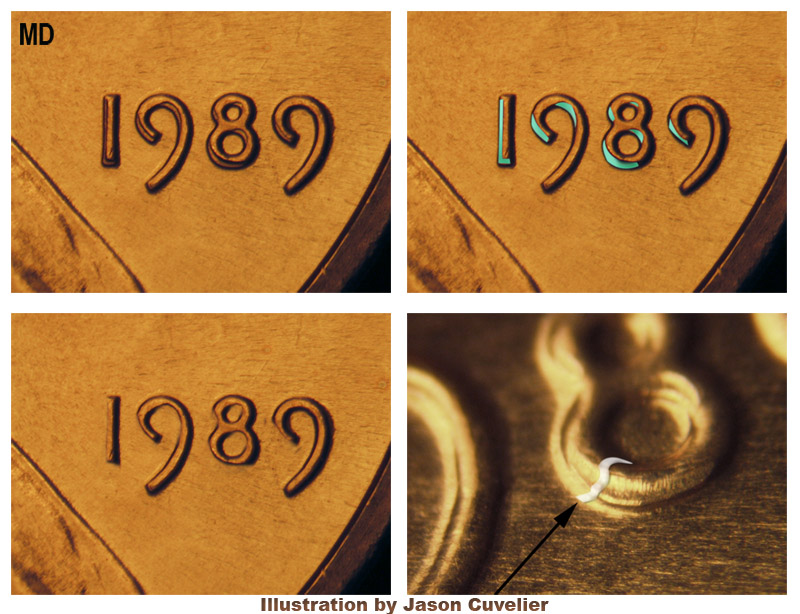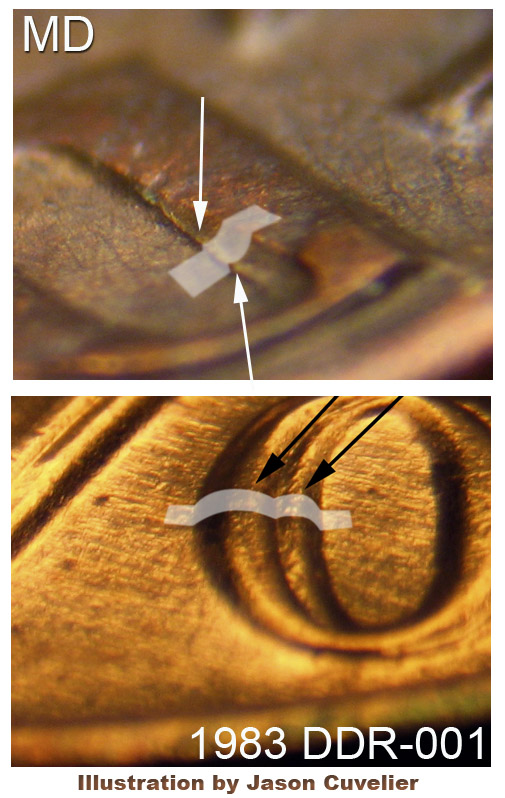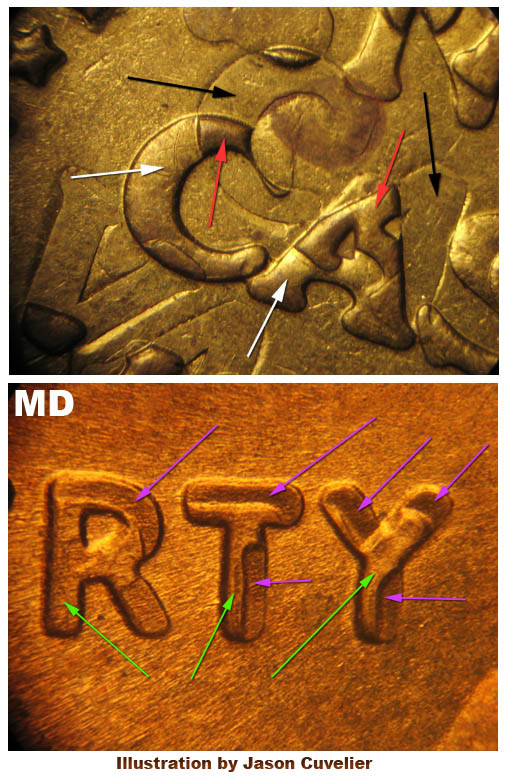PART VI. Striking Errors:
Machine Doubling:
Push Doubling:
Definition: Push doubling occurs when a die bounces off the surface of the coin, shifts position, and lands lightly in a different spot. A diagnostic feature is marginal shelving at the edges of design elements. Interior features often show rounded doubling that is easily mistaken for the effects of a double strike or a doubled die. Push doubling can occur on either face, although its most dramatic expressions tend to appear on the face struck by the hammer die. Cases of push doubling can involve up to three closely-spaced sets of accessory design elements. Push doubling can occur on both faces simultaneously and often in different directions. Up to three different doubling directions can be represented on a single face.
Forms of machine doubling combining elements of both push doubling and slide doubling do occur.
Classic machine doubling can be seen on this 1991 Lincoln cent. The doubling occurs on both faces. The obverse face shows doubling in three different directions — east-to-west, south-to-north, and north-to-south.


Push doubling is often naked eye obvious, this is due to the way the rebounded areas have cut into the metal and often have a different, shinier surface that will catch the light differently. New collectors will often mistake common push doubling as being a doubled die or a in collar rotated double strike.
A doubled die is an additive process where the hub has left multiple impressions of a device, this will result in rounded doubled areas and make the device larger. Doubled dies most often have notching which is where the sharp corners of the doubled areas overlap; machine doubling cannot do this.
Below is a close up of a Lincoln cent with push doubling and below that a close up of 1983 DDR-001 with rounded doubling. The push doubling shows a marginal doubling that is flat, uneven and cuts into the device. The doubled die shows the O of cent with an additional part of the same O, incomplete and adjacent. While the more lightly hubbed O is incomplete, the first hubbed O was not.

The illustration first shows shows a in collar rotated double strike on a token where the black arrows show the first strike of CA, subsequently flattened, the hammer die retracted then struck a second time and the red arrows show the CA from from that strike. The red arrows show areas from the first strike that were not impacted from the second. At the bottom is push doubling where the green arrows show the RTY and then the violet arrows where die rebounded and flattened part of the devices.
